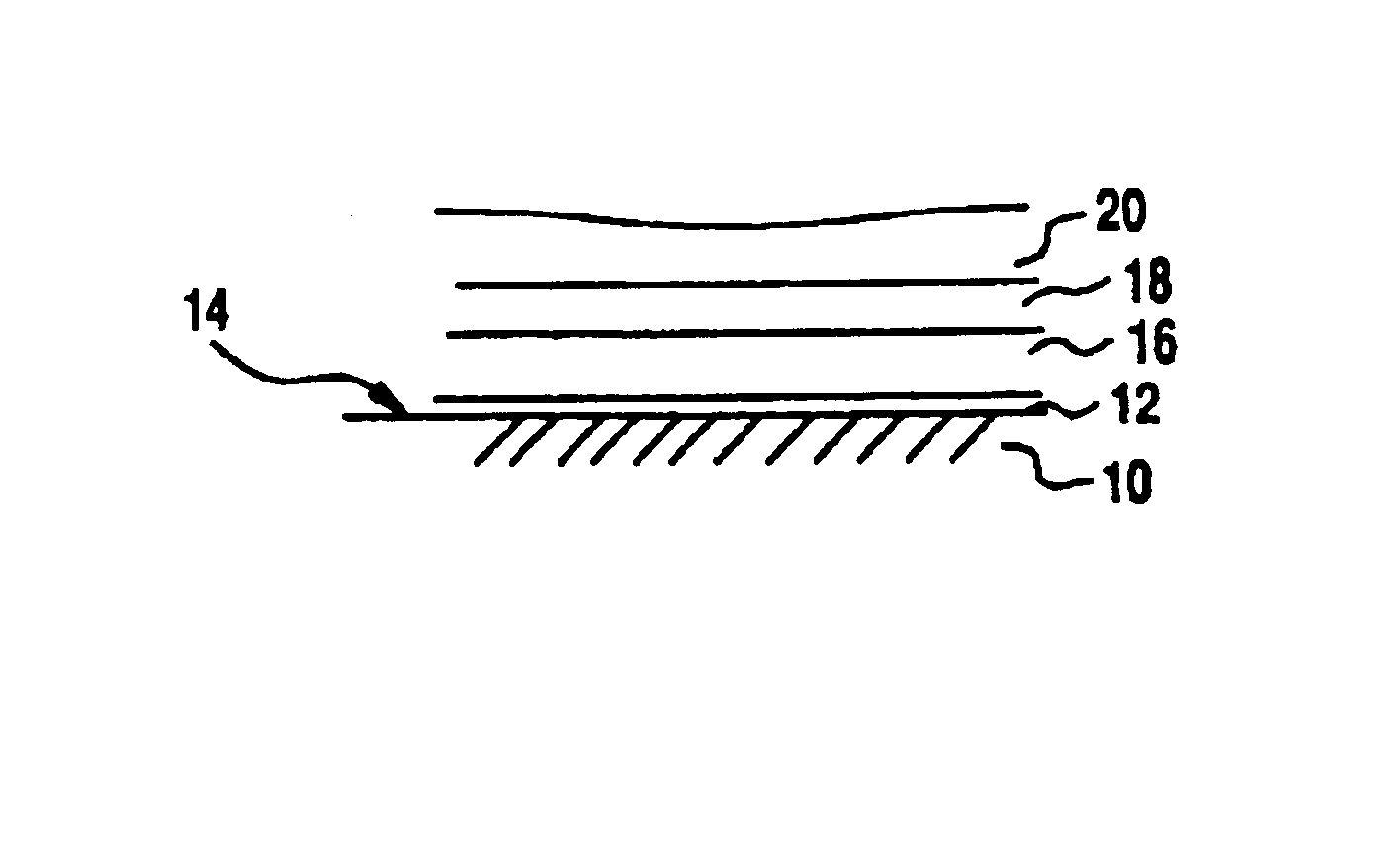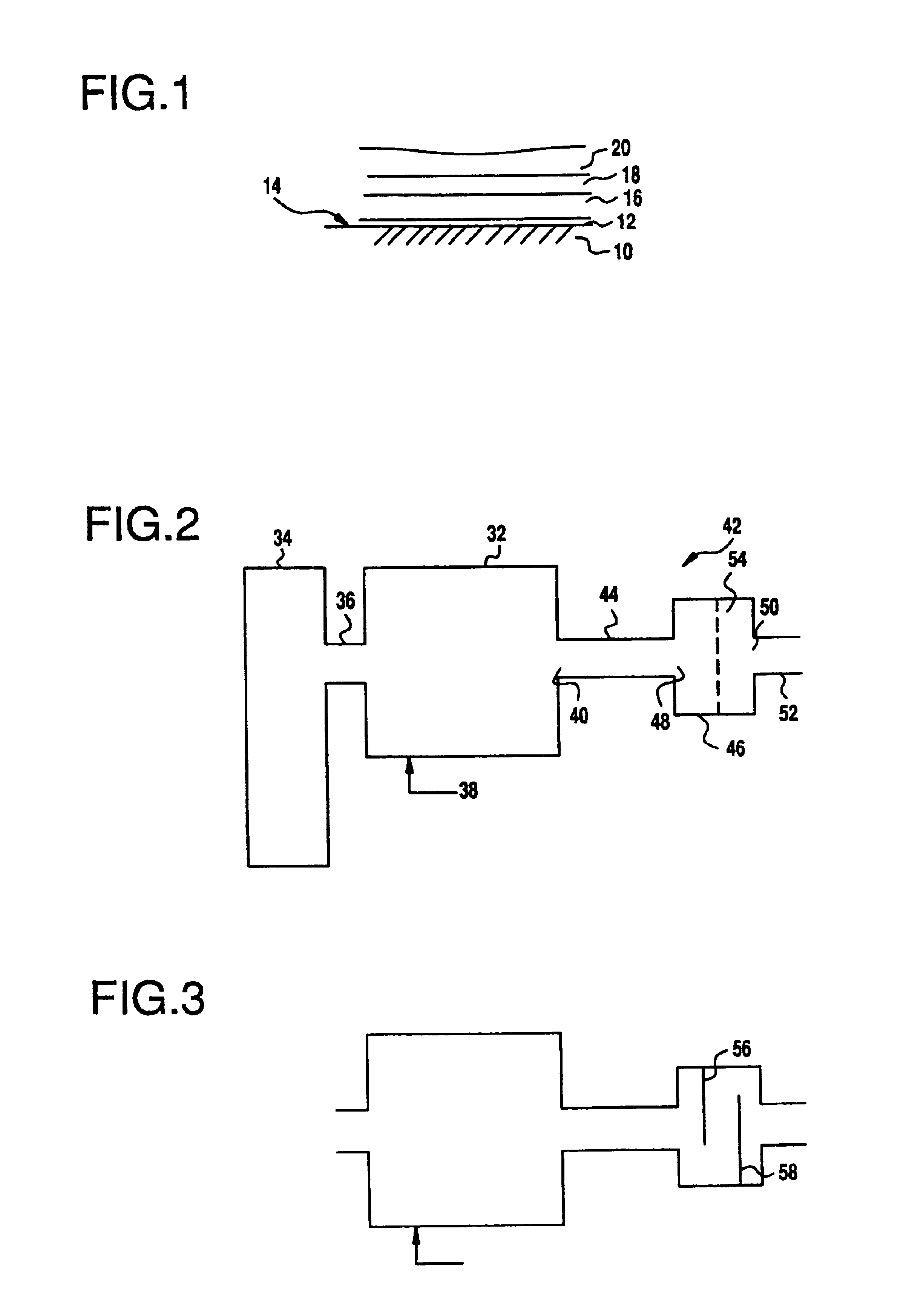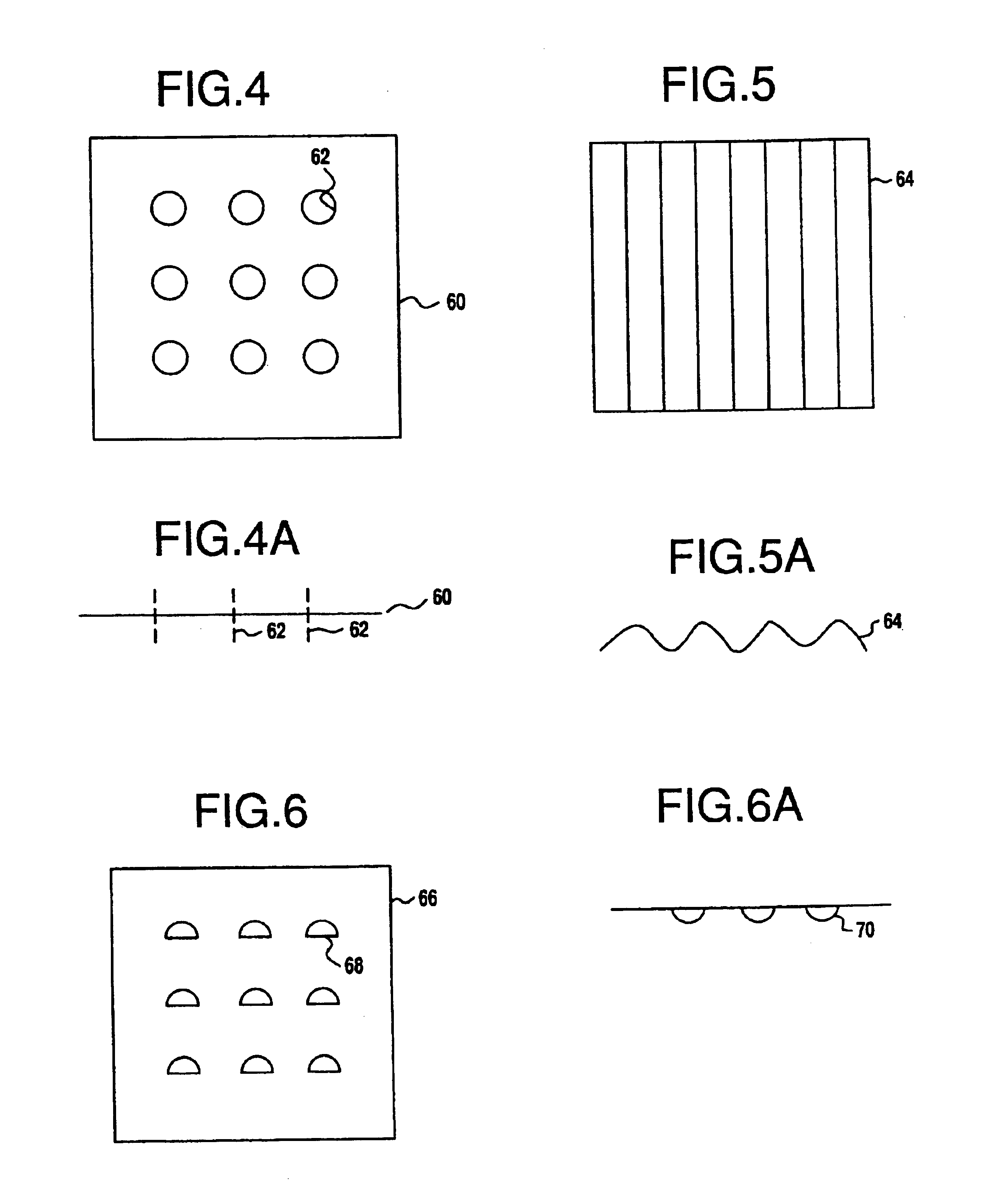Catalytic metal plate
- Summary
- Abstract
- Description
- Claims
- Application Information
AI Technical Summary
Benefits of technology
Problems solved by technology
Method used
Image
Examples
example 1
[0177]A catalyst composition was prepared as a tie layer or base coat. This composition was formed into a slurry comprising 35 percent alumina specified to have a particle size of 5 to 100 micrometers and a surface area of 150 m2 / g and 2 weight percent (based on ZrO2) zirconia acetate as a binder with 14 weight percent acetic acid. The slurry was ballmilled for 24 hours to result in a particle size of 90 percent of the particles being less than 4 micrometers when using a Horiba laser particle size analyzer. The design of the metal plate was of the type shown in FIG. 4. The metal plate was 30 mils thick. The surface of the metal plate was roughened by sandblasting using 30 to 100 mesh alumina particles. The metal plate was then heated for 2 hours at 980° C. to form an alumina surface. The composition comprises iron and about 20.4 percent chromium, 5.2 percent aluminum, about 0.20 percent cerium, about 0.078 percent carbon, about 0.20 percent silica, less than. about 0.3 percent manga...
example 2
[0182]A coated metal plate for small engine applications was made using a metal plate made of a steel composition comprising the same composition as in Example 1. The metal plate was pressed into a final shape which is of the type illustrated in FIG. 17. A microphotograph of the clean surface is shown in FIGS. 9A and 9B. The metal plate was first sandblasted using a 30 to 100 mesh alumina to clean the surface and generate a random rough surface. The surface is shown in the microphotograph of FIGS. 10A and 10B. The metal plate was then calcined at 980° C. to generate an alumina bonding layer. A surface analysis by electron dispersive spectrascopy (EDS) indicated that the original metal was mainly iron, chromium and aluminum and the surface composition was not significantly changed by sandblast treatment. Upon heating the surface was mainly covered with aluminum indicating that the alumina inside the metal interior had migrated into the surface to form a protecting and binding layer. ...
example 3
[0185]Two coated metal plate catalyst samples were prepared and engine aged and evaluated. The fresh and aged activities of the samples were found to be satisfactory. Two perforated metal plates of the type shown in FIG. 4 were first treated with a sand blast gun using 30-100 mesh alumina to increase surface roughness. The plates were then calcined at 950° C. for two hours. The plate was cooled to room temperature and a thin coat comprising alumina having a surface area of 150 m3 / g and a particle size of 90 percent of the particles less than 5 micrometers was applied with a paintbrush to form a tie layer. The alumina tie coat was allowed to dry. A bottom layer catalyst coat composition recited below was applied and allowed to dry followed by a top catalytic layer composition as recited below. Plate 1 had a blank weight of 32.84 grams. To this was added 0.353 grams of tie coat, 0.75 grams of a bottom catalytic coat and 1.52 grams of a top catalytic coat resulting in a total addition ...
PUM
| Property | Measurement | Unit |
|---|---|---|
| Temperature | aaaaa | aaaaa |
| Temperature | aaaaa | aaaaa |
| Time | aaaaa | aaaaa |
Abstract
Description
Claims
Application Information
 Login to View More
Login to View More - R&D
- Intellectual Property
- Life Sciences
- Materials
- Tech Scout
- Unparalleled Data Quality
- Higher Quality Content
- 60% Fewer Hallucinations
Browse by: Latest US Patents, China's latest patents, Technical Efficacy Thesaurus, Application Domain, Technology Topic, Popular Technical Reports.
© 2025 PatSnap. All rights reserved.Legal|Privacy policy|Modern Slavery Act Transparency Statement|Sitemap|About US| Contact US: help@patsnap.com



